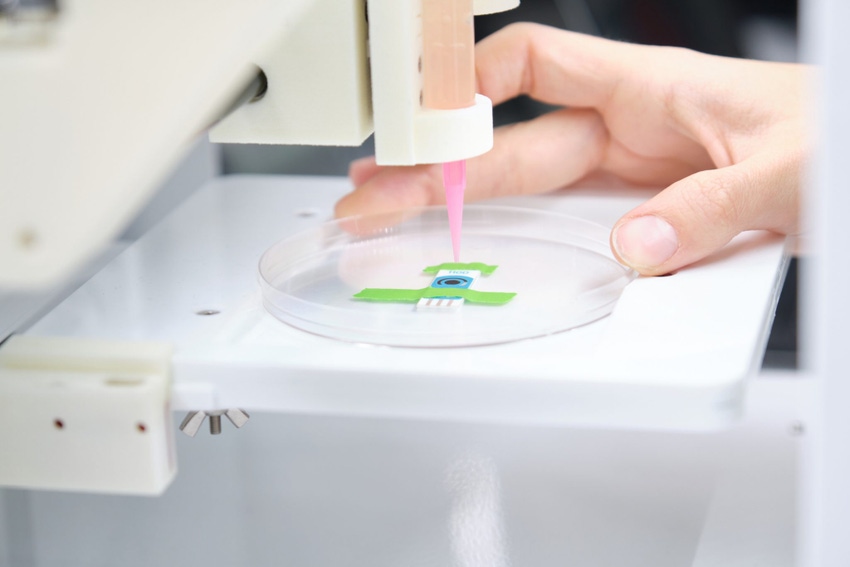The printable electronics could be used for patient monitoring

A team of researchers has developed a new class of biomaterial inks, offering novel possibilities for 3D-printed wearable electronics.
The new inks differ from existing biosensors in that they mimic the conductivity of human tissue, allowing them to be seamlessly integrated with the human body as well as customizable depending on the patient’s needs.
The team from Texas A&M University used a new class of 2D nanomaterials combined with a modified gelatin to create the final product, which they say is similar in texture and structure to Jell-O.
“The impact of this work is far-reaching in 3D printing,” said Akhilesh Gaharwar, associate professor in the department of biomedical engineering. “This newly designed hydrogel ink is highly biocompatible and electrically conductive, paving the way for the next generation of wearable and implantable bioelectronics.”
The ink also has changeable viscosity, with the material becoming smoother and more liquid as more force is applied and giving them high durability, as they cannot be broken by typical force. The flexibility of the ink allows researchers to print any shape required, tailoring the devices to each patient.
“These 3D-printed devices are extremely elastomeric and can be compressed, bent or twisted without breaking,” said Kaivalya Deo, lead author of the paper. “These devices are electronically active, enabling them to monitor dynamic human motion and paving the way for continuous motion monitoring.”
The news has potentially significant ramifications for wearable devices, with the team saying it could be used to print electronic tattoos for patients to measure different physiological symptoms, offering real-time monitoring for a host of conditions including diabetes, Parkinson’s or cardiac arrhythmia.
About the Author(s)
You May Also Like





.png?width=300&auto=webp&quality=80&disable=upscale)


.png?width=300&auto=webp&quality=80&disable=upscale)